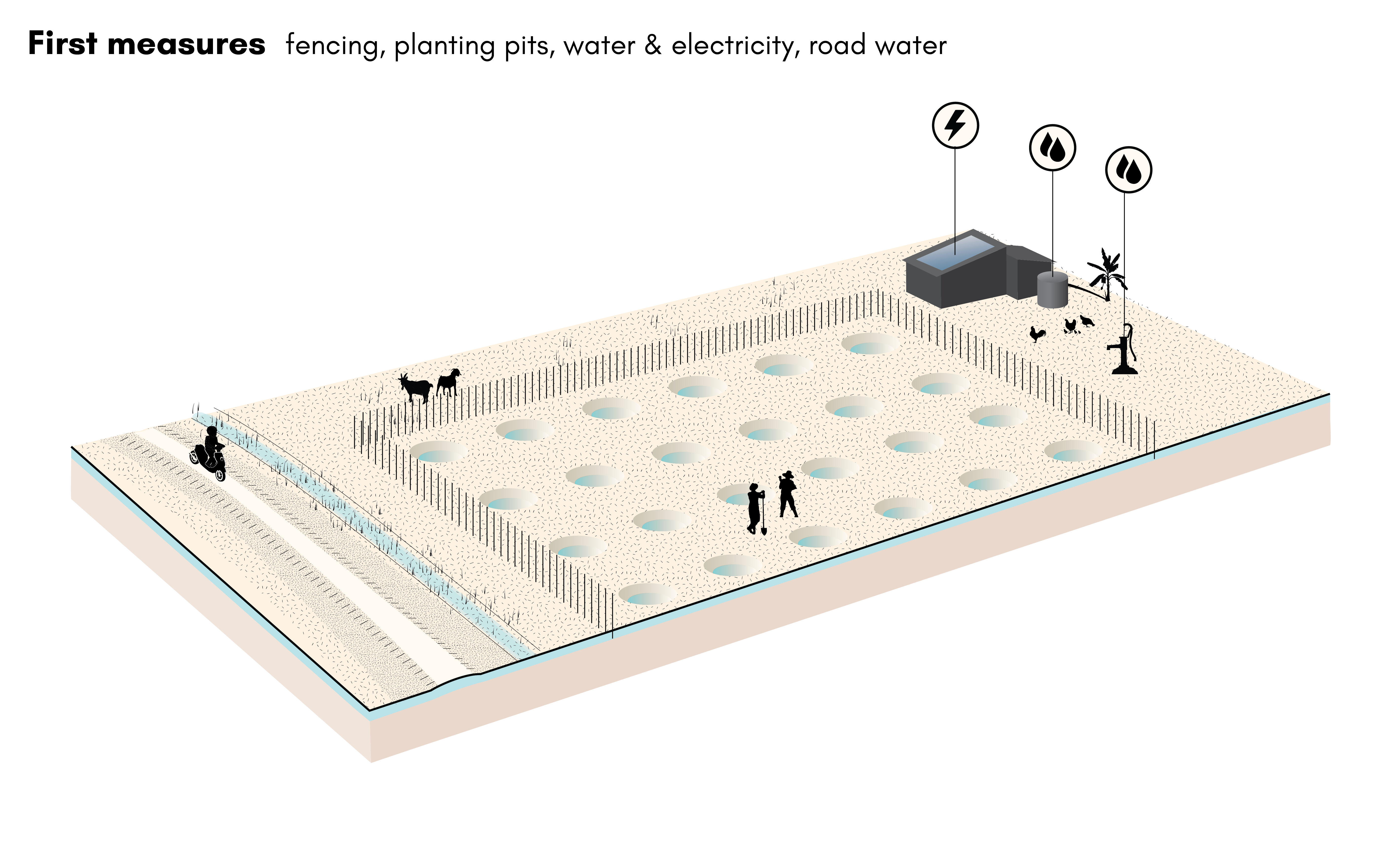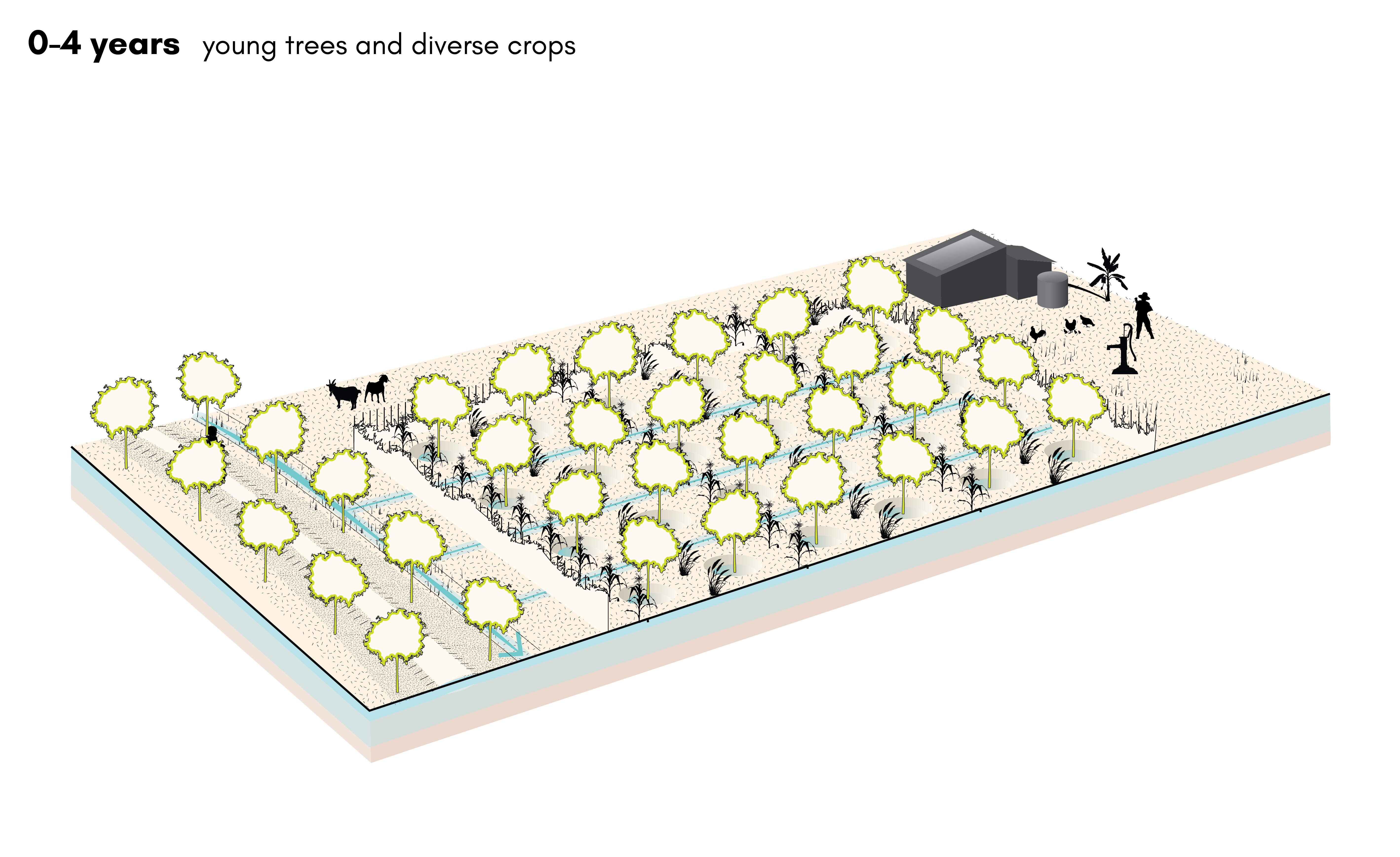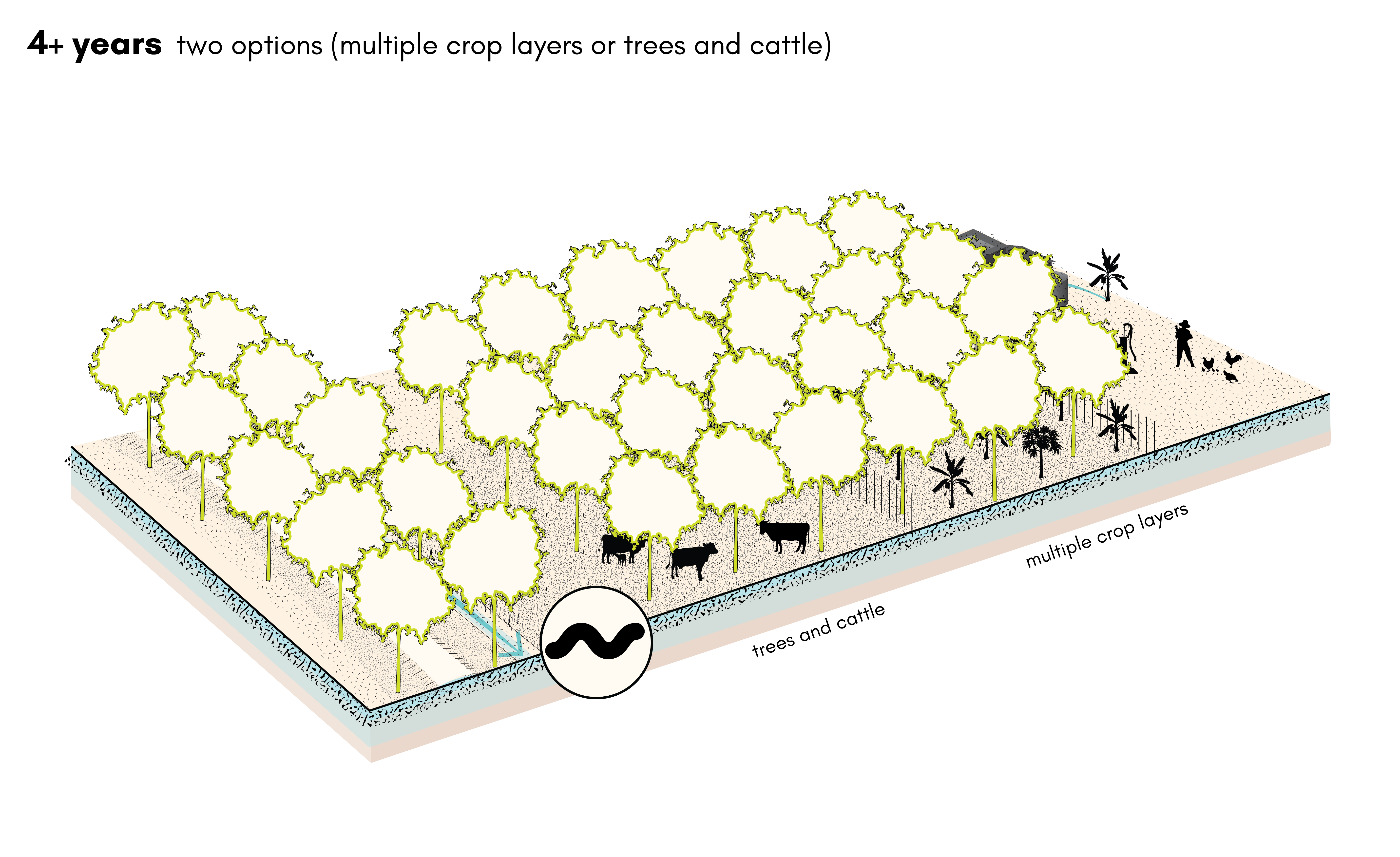Africa Wood Grow has a bottom-up approach that involves the local community in every step of the process. The local community is the driver of the process of restoring the degraded landscape. Local farmers choose to plant trees collectively on their own land. By planting a variety of indigenous tree species, biodiversity has increased and stimulated the sustainability and production of agroforestry practices. As an example, Melia Volkensii, is a species native to the East Kenyan region.
The trees are essential for the well-being of the community and the surrounding nature. They improve the soil fertility, keeping more water in the soil before slowly releasing it to the Tiva River. Additionally, the canopy cover protects the soil from direct precipitation, allowing the water to reach deeper into the ground and enhance soil quality. Consequently, the trees have prevented the erosion of fertile soil. Moreover, fallen leaves of the trees, mixed with animal compost, enrich the soil significantly, leading to higher agricultural output in the long run and improved food security.




